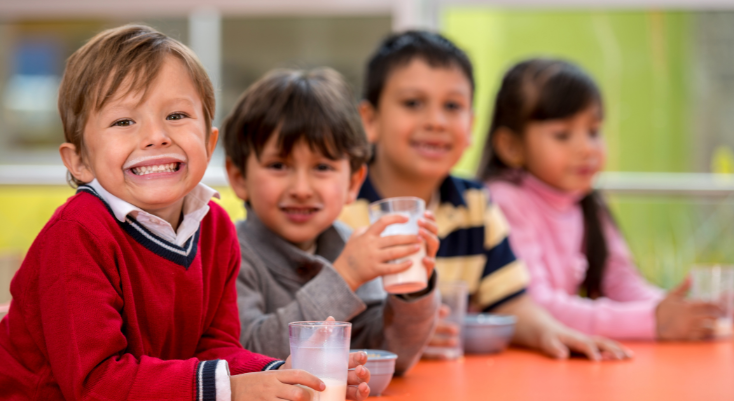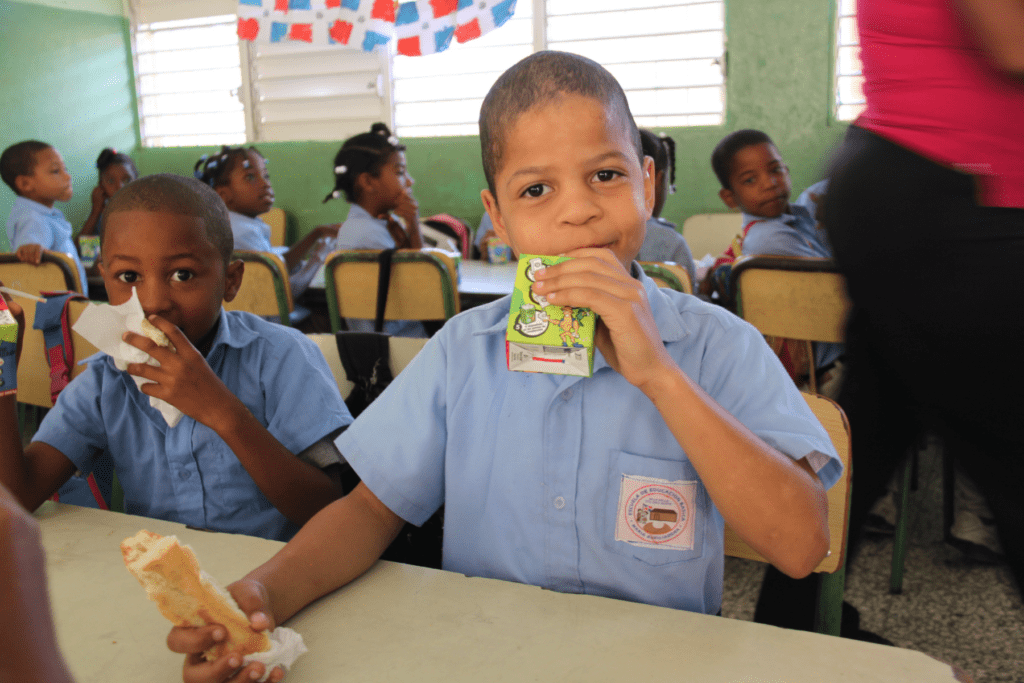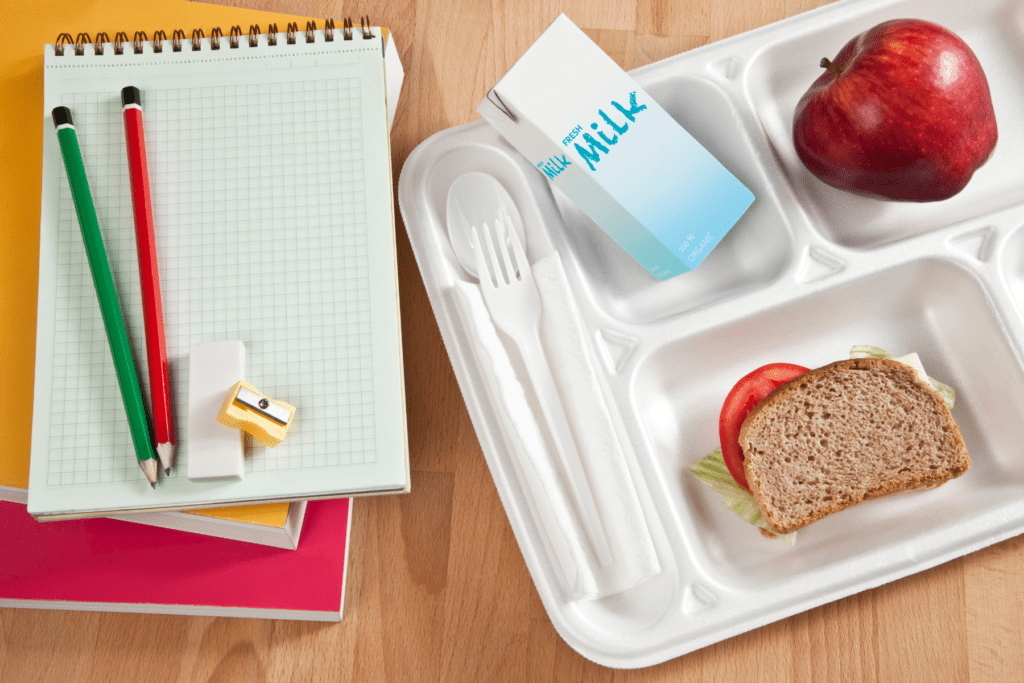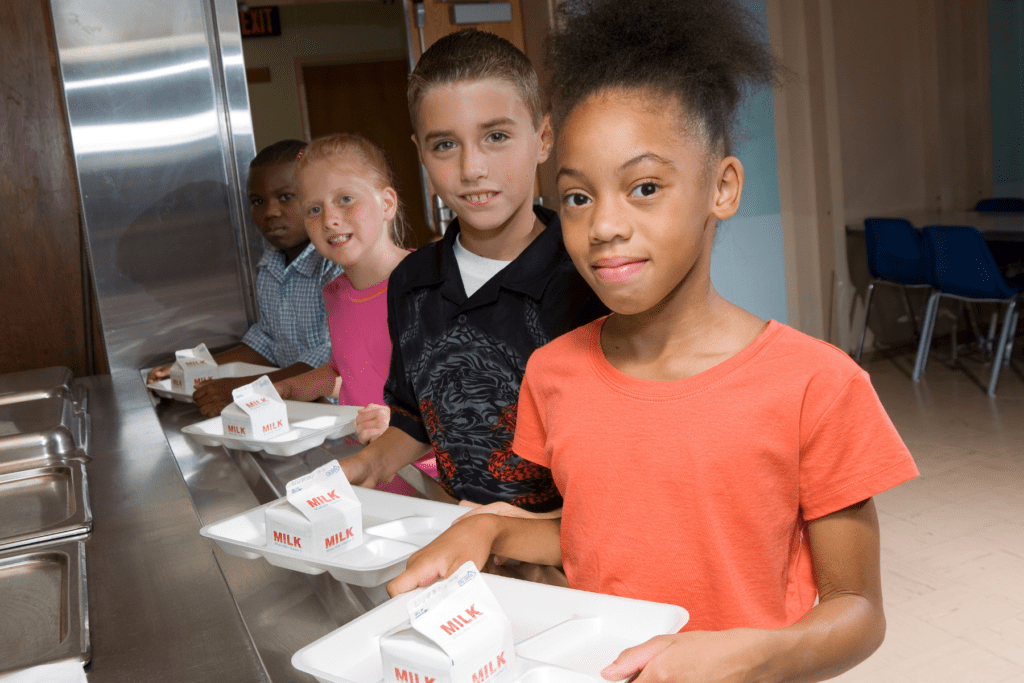With the beginning of the school year in my home country, Belgium, journal headlines highlight again the issue of “empty lunchboxes”. The situation of children going to school without any food to consume during their lunch break seems to only grow. It is hard to imagine schools being a place where children learn and develop if they have an empty stomach. Worldwide close to children under five years of age are stunted (state of chronic undernutrition), 45 million are wasted (state of acute undernutrition) and almost 39 million are overweight[1], showcasing the magnitude of the situation.
Healthy nutrition is a critical component of optimal childhood development. Improving children’s nutritional status through nourishment positively affects not only their health but also their ability to learn and perform at school, thereby contributing to the sustainable development of future generations.
School meal programmes have been put high on the agenda of the United Nations, as it has been identified as one of the key levers in the food systems transition during the UN Food System Summit in 2021[2]. These programmes are a significant safety net for children, helping to combat poverty and malnutrition. Well planned and executed school meal programmes are at the nexus of many sustainable development goals; SDG2 (zero hunger), SDG 3 (good health and wellbeing), SDG 4 (quality education), SDG 5 (gender equality), SDG 12 (responsible consumption and production), and SDG 17 (partnerships). Attributing school meals the current well-deserved spotlight.
School milk programmes are a type of school meal programmes which promotes the distribution, of milk and dairy products in schools. School milk programmes have a long history [3] and can be traced back almost a hundred years, with these originally created as safety net to support nutritionally vulnerable and . Milk and dairy foods are nutrient rich, easy to consume, highly palatable and the wide variety of milk and dairy products offer many options to suit children’s needs, tastes, and cultural preferences.
Setting up and maintaining such programmes is complex, there are different barriers to overcome, as well as key factors to consider. With the aim to have a better overview of these programmes globally and the specificity of each, IDF is launching its survey on school milk programmes amongst its members as well as partnering with Tetra Pak to collect data from programme implementers. The survey will gather specific details on key aspects, including management, distribution, promotion, and funding. The new edition will include questions on programme resilience, with a focus on addressing challenges posed by COVID-19. All data will be made available so all players in the field and other stakeholders can learn and be inspired.
If you are in charge of a school milk programme in your country, do not hesitate to reach out to [email protected] to see how you could get involved in the survey.
[1] Global Nutrition Report. 2022 Global Nutrition Report: Stronger commitments for greater action. Bristol, UK: Development Initiatives, 2022
[2] https://www.un.org/en/food-systems-summit
[3] IDF Bulletin N °505/2020– the nutritional impact of school milk















